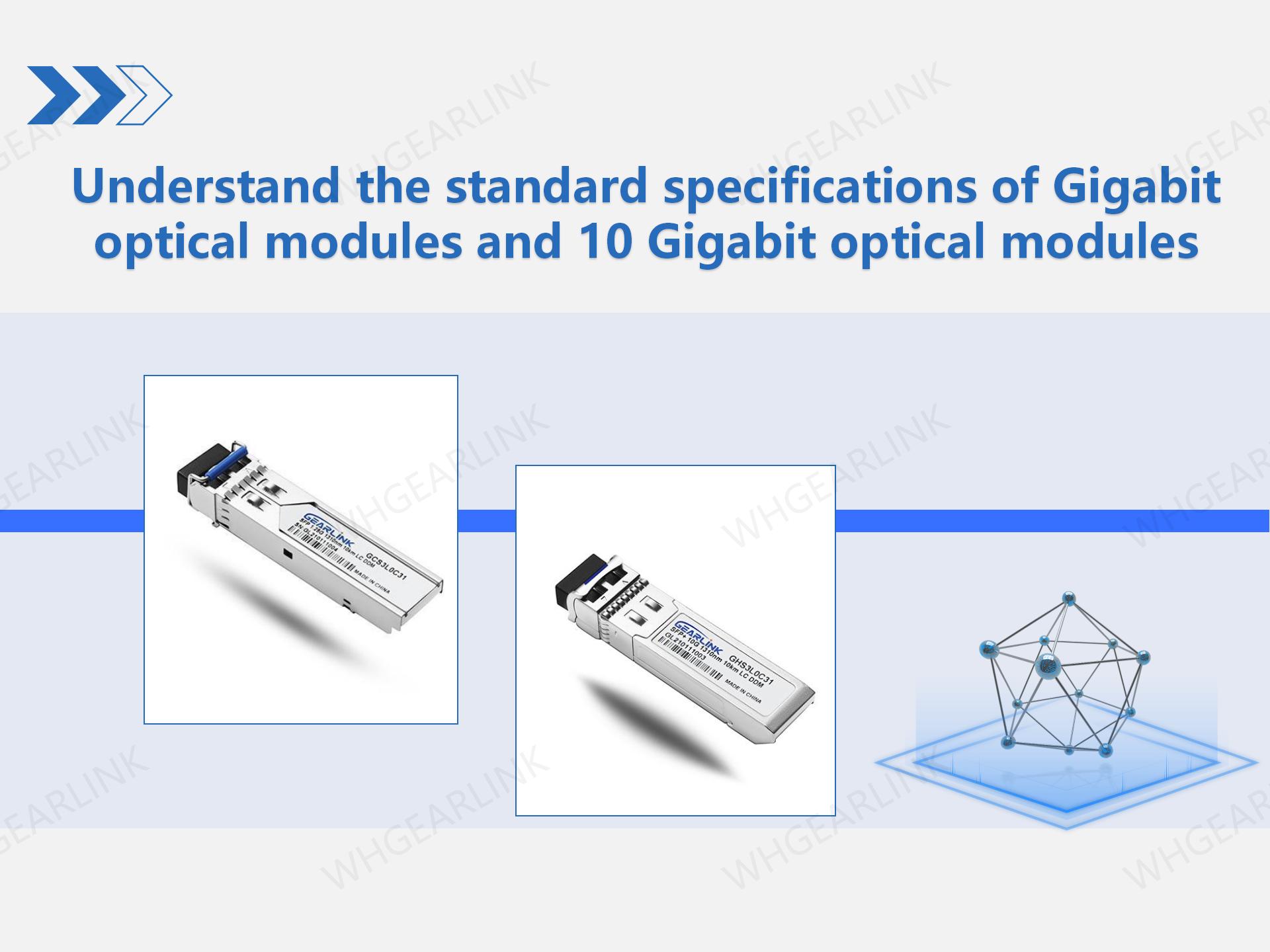Gigabit optical transceivers and 10 Gigabit optical transceivers are key equipment in the data center and network fields. Their performance and interoperability need to comply with a series of standard specifications to ensure their reliability and compatibility. This article introduces some common standard specifications of Gigabit optical transceivers and 10 Gigabit optical transceivers, and what optical transceivers need to follow these standards.
Gigabit optical transceivers and 10-gigabit optical transceivers are key equipment in the data center and network fields. The production of optical transceivers needs to follow some standard specifications to provide unified rules and guidance for the design, manufacture and application of optical transceivers to ensure that optical transceivers are used in various The equipment and network environment can work normally and meet the needs and expectations of users. This article introduces why optical transceivers need to follow standards and some common standard specifications for Gigabit optical transceivers and 10 Gigabit optical transceivers.
Guarantee compatibility
compliance with standards for optical transceivers can ensure compatibility and interoperability between optical transceivers produced by different manufacturers. If the optical transceiver is not designed and manufactured according to standard specifications, it may result in failure to connect or transmit data between different devices. By following the standard, it can be ensured that the optical transceiver can work well in various equipment, network and system environments, and realize stable and reliable data transmission.
Improve reliability
Standard specifications provide baseline requirements for the design, manufacture and testing of optical transceivers. These requirements cover all aspects of the physical layer and data link layer, including electrical characteristics, optical performance, transmission distance, power consumption, and environmental adaptability. By following standard specifications, you can ensure high-quality and stable performance of optical transceivers, reduce failures and problems caused by improper design or manufacturing, and improve the reliability and durability of optical transceivers.
Promote market competition and innovation
Standard specifications provide a fair and just competitive environment for the optical transceiver market. All manufacturers design and manufacture based on the same standard, which makes the products on the market have fair comparison standards in terms of performance, quality and price, and consumers can make choices according to their own needs. Standard specifications also provide manufacturers with room for innovation, encouraging them to make improvements and breakthroughs in the functions and performance of optical transceivers, and promote the progress and development of optical transceiver technology.
Reduce costs and improve efficiency
standard specifications make the design, manufacturing and testing process of optical transceivers more standardized and standardized. This can reduce unnecessary duplication of work, improve production efficiency, and reduce manufacturing costs. Standardized workmanship and testing procedures can also reduce failure rates, reduce repair and replacement costs, and save money and time for users and operators.
Standards for Gigabit optical transceivers
Gigabit optical transceivers are usually based on Gigabit Ethernet standards, the most common of which is IEEE 802.3ab (Gigabit Ethernet). This standard stipulates the working specifications of the physical layer and data link layer of gigabit optical transceivers, including transmission rate, interface type, transmission distance and fiber type, etc.
The standard of 10 Gigabit optical transceivers
10 Gigabit optical transceivers are usually based on the 10 Gigabit Ethernet standard. Common 10 Gigabit Ethernet standards include IEEE 802.3ae (10G Ethernet) and IEEE 802.3ba (40G and 100G Ethernet). These standards stipulate the transmission rate, interface type, fiber type and transmission distance of 10 Gigabit optical transceivers.
Multi-Source Agreement (MSA)
In addition to association standards, gigabit optical transceivers and 10-gigabit optical transceivers also need to comply with specific MSA specifications. MSA is a technical specification jointly developed by optical transceiver manufacturers to ensure the compatibility and interoperability of optical transceivers from different manufacturers.
SFP and SFP+
These are the most common packages for Gigabit optical transceivers and 10 Gigabit optical transceivers, and are also important standards for optical transceivers compatible with different transmission rates. The standard specifications of SFP and SFP+ ensure the consistency of optical transceiver size, electrical interface and optical fiber interface.
In general, Gigabit optical transceivers and 10 Gigabit optical transceivers need to comply with the corresponding IEEE standards and MSA specifications to ensure their performance and interoperability in data centers and network environments. The formulation and compliance of these standard specifications also provide technical references for optical transceiver manufacturers, promoting the healthy development of the optical transceiver market and the reliability of interconnection.


